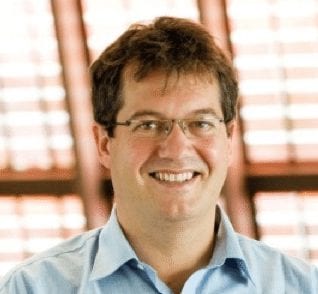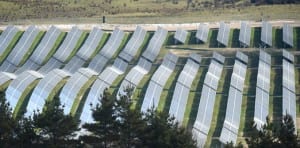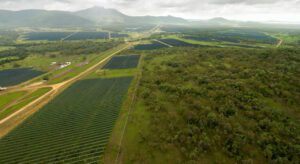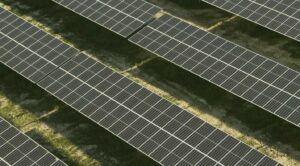When Mark Twidell was a senior executive at BP Solar in the mid 2000s, his team put together a forecast for Australian PV deployment of 200MW by 2010. “We thought we were dreaming,” he says. And it may have appeared so, because BP Solar was later to close what was then the country’s only PV manufacturing facility, only for it to be reopened and then closed again by another party.
This week, Mark Twidell steps down as head of the Australian Solar Institute – which is being absorbed into the Australian Renewable Energy Agency – after an extraordinary three years of industry development. Already, more than 2,000MW of solar PV has been installed in Australia – mostly on household rooftops. That has engaged the public, and their wallets, but the more significant work has been occurring away from the public eye.
The ASI was originally formed to provide $100 million of government funding support for R&D in Australian solar technologies. But alongside ARENA, it has actually deployed $180 million and leveraged a total R&D solar portfolio of more than $450 million, supported by more than 100 local and leading international organisations.
This includes two crucial announcements made just last week that will lock in eight years of funding in two key streams – solar PV and concentrated solar power (CSP) – that will pool the efforts of Australia’s best research institutions.
Twidell ends his tenure at the ASI this week. We caught up with him to discuss some of the highs and lows of the Australian solar industry in the last few years, where the opportunities lie, and which technology developments we should watch out for in the future…
Australian R&D leadership
Twidell says Australian solar R&D remains among the best in the world, and it is without doubt a leader in solar PV. But he argues that one of the best ways to leverage this R&D is to create what he describes as an “industrial-scale pilot production line” in Australia. This means that Australian IP will not have to chase production lines overseas, where Australia may have less control over its IP. Instead, Australia should encourage international groups to beat a path to Australia’s institutions to trial and keep up with the latest research and developments. A line equivalent to a 50MW plant should do the trick – and he says this will be something for ARENA to consider if the right partnership structure can be arranged with industry and research players.
The highs
Unexpectedly, Twidell cites the much criticised, and ultimately disbanded, Solar Flagships program as one of the highs. The ASI was charged as the knowledge-sharing agent for that program, and despite the inability of the flagships program to actually get anything built, Twidell says it still produced a huge amount of unseen value in discoverable data – on the decline in PV costs, for instance – which in turn was crucial in helping to form views in the Energy White Paper, which finally recognised the potential of solar’s contribution to the country’s energy mix.
The second major high, apart from individuals he has worked with – both in the ASI and in government – and the individual R&D achievements, was the ramping-up and scaling-up of solar PV, even if this was triggered by incentives that might not have been repeated in hindsight. “The fact is that the Australian community has responded to a technology when offered at a price point and invested a considerable amount of their own money and put solar on their roofs, and the technology is continuing to come down in cost.” And this, in turn, is finally engaging the major players.
The lows
Twidell says the biggest low has been the slow pace of development in CSP, which has not kept pace as many had forecast, partially because so many projects were shelved in favour of PV, which offered a lower price point. Twidell says CSP has to start at a minimal scale, so that the capital costs can be brought down to allow larger deployment. But he is encouraged by the move of the “sun belt” nations such as the Gulf states to invest billions in CSP, which he agrees is the “missing link” in high renewable penetration scenarios . “The two technologies are complimentary,” he says. The Energy White Paper highlights the fact that solar and wind will be the lowest-cost technologies in the merit order, but peaks and troughs will need to be filled by dispatchable energy such as CSP with storage, which he says will hit a key value point in the market.
Research vs deployment:
“That is a big debate,” he says. “We have to make choices about where to put money. Our mandate has been R&D and early stage demonstration. There is no doubt that early stage demonstration costs a lot of money – you can spend the equivalent of several years of research in a lot of concrete and steel. Deployment is going to drive down the cost of technologies, but to say you should be shifting research dollars into deployment (or vice versa) is a false choice. You need balance across both.” Twidell says Australia’s advantage will come in learning how to leverage off the deployment globally and identifying where the learning curve kicks in.
The crystal ball
Twidell has been in the box seat when looking at the new technologies that may make a big difference in the future. Here’s a few that attracted his attention
Metal grade silicon: The ability to work with metal grade silicon. PV has traditionally worked with higher grade silicon that once cost $400/kilo and now costs around $20/kilo. Being able to work with upgrade metallurgical or “metal” grade silicon could lower the cost further to around $2/kilo – another significant drag down the cost curve.
3rd generation cell technologies: Some of the developments being focused on by UNSW’s Martin Green and other researchers, taking efficiency levels to 30 per cent, 40 per cent, or even 50 per cent. This includes multi junction cells, hot carrier cells that provide an easy path for electrons across junctions, and using copper, tin, and zinc in those multi-junction cells. “Solar PV is only going to come down in cost and increase its efficiency,” he says.
CSP storage: Several Australian companies are doing important work in high temperature storage – using graphite blocks, and novel liquids and metals to store high temperature fluids which can then be converted into electricity. He also says the potential for hybrids is also exciting, such as pre-heating water for use in coal-fired plants and work alongside gas-fired units.
Beyond the age of steam: Solar PV is the only technology source that can generate electricity today at scale without moving parts, and the history of solid state – TVs, mobiles, etc – suggests that costs will fall considerably. CSP can also move beyond steam by using the sun’s energy to compress air into a gas – and then using it to turn a turbine – a little like a jet engine.
Integration technologies: The need to improve and refine forecasting. In wind, forecasting is highly effective, accurate to around 96 per cent. Twidell says it is wrong to describe solar and wind as intermittent, because that suggests an element of surprise. The exact term should be “variability” because technologies are allowing solar production to be forecast accurately. Another key integration technology is storage, and the ability to use, for examples, electric vehicles as a battery.
Creating new fuels: There will likely be a huge need for liquid fuels of some sort into the future. Solar is unique in that it has the ability to create even more fuel than existed before. For example, using solar thermal, it is possible to put LNG through a solar process and add some 25 per cent energy content and export it as syngas. That could be decades away, but the potential for Australia, and other sun-belt countries, should not be underestimated – especially where all of the export infrastructure and relationships exist already.
100% renewables?
“Ultimately, we will get there. We are at 12 per cent now. I believe in evolution. We have got to work out how to get to 20 per cent. Then to 30 per cent and the 40 per cent – and as renewable penetration increases, new challenges thrown up.”
And what are those barriers?
“There will always be institutional barriers to new technology entering a market place. Any market will fight new entrants. We shouldn’t feel bitter and twisted that it will happen to solar. We’ve just got to work hard and lower the cost and better explain it. There will be key points – we’ve got to manage variability, but that is as much about education – showing people how to do things – than a technical challenge. Australia is well placed to manage that, because regional grids in Australia will be a great places to test higher penetrations of renewable energy.
“The other barrier is capital cost. But, in the case of PV, a huge amount of consumer investment can be mobilized, and this will be a powerful signal to the industry. New technologies often move between amusing, annoying, and then acceptable. Solar PV has got to the ‘annoying stage.’ But it will move on.
“Something has got to meet the peaks – being able to control the load rather than control supply will become an increasingly important area. Ultimately, we will need smart grids, and solar may be technology that helps make grid smart.”








